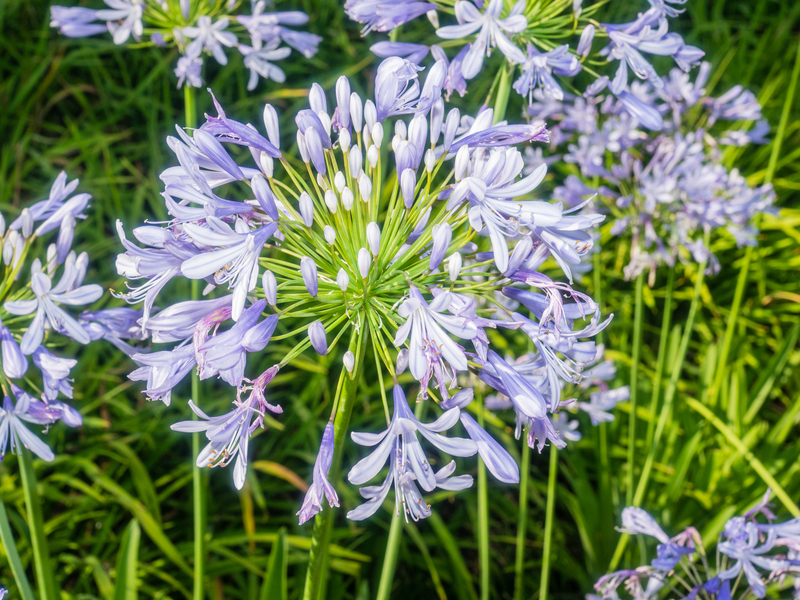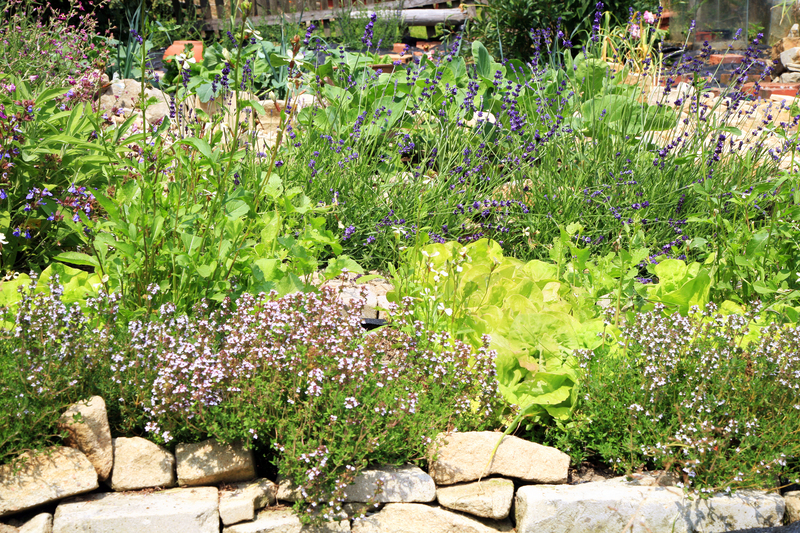Landscape Artistry: Hedge Trimming Techniques and Shape Innovations
Posted on 03/09/2025
Landscape Artistry: Hedge Trimming Techniques and Shape Innovations
In the world of landscaping and garden design, few elements are as visually striking or versatile as expertly sculpted hedges. Landscape artistry has evolved tremendously, with hedge trimming techniques and the emergence of innovative shapes transforming the humble bush into living works of art. Whether you're a passionate gardener or a professional landscaper, mastering the art of hedge shaping can elevate any outdoor space.

Fundamentals of Hedge Trimming in Landscape Artistry
Before delving into advanced hedge trimming methods and creative shapes, it's essential to understand the foundations. These basics provide the backbone for any successful landscape artistry project.
The Art and Science Behind Hedge Trimming
- Why Hedge Trimming Matters: Regularly trimmed hedges foster dense growth, maintain attractive shapes, deter pests, and support plant health.
- Green Architecture: Well-maintained hedges act as living architecture--defining borders, creating privacy, and adding multi-dimensional appeal to gardens and parks.
- Environmental Impact: Hedges provide habitats for wildlife, contribute to air purification, and can help with noise reduction in urban environments.
Landscape artistry intertwines aesthetic vision and horticultural knowledge. Choosing the right plant varieties, tools, and techniques is crucial for achieving beautiful, healthy, and long-lasting hedge designs.
Choosing the Best Plants for Hedge Sculpting
Not all shrubs are created equal--some respond better to shaping and pruning artistry than others. The right plant selection lays the groundwork for durable and striking hedge features.
Ideal Hedge Shrubs for Artistic Shaping
- Boxwood (Buxus sempervirens): Famous for its small leaves and dense growth, making it perfect for intricate shapes and topiary.
- Yew (Taxus baccata): Highly tolerant of pruning and shapable into geometric and organic forms; ideal for formal hedges.
- Privet (Ligustrum): Fast-growing and tolerant of frequent clipping, popular in traditional landscapes.
- Laurel (Prunus laurocerasus): Broadleaf evergreen with large leaves, suitable for tall privacy screens and bold shapes.
- Hornbeam (Carpinus betulus): Retains leaves in winter and responds well to detailed hedge trimming artistry.
For innovative shaping, seek varieties that boast fine-textured foliage, robust health, and adaptability to frequent cutting.
Essential Tools for Hedge Trimming Mastery
Just as an artist relies on high-quality brushes, a landscape artisan needs dependable hedge trimming tools to achieve clean lines and imaginative shapes.
Must-Have Hedge Trimming Tools
- Manual Hedge Shears: Perfect for precision trimming and fine finishing touches.
- Electric/Battery Hedge Trimmers: Efficient for larger hedges and uniform shapes; saves time and effort.
- Topiary Shears: Specifically designed for intricate detail work and complex shapes.
- Loppers: Ideal for cutting thicker branches while maintaining overall hedge form.
- String, Stakes, and Templates: Essential for outlining symmetrical patterns and guiding novice hands.
- Ladders and Safety Gear: Ergonomic ladders, gloves, eye protection, and ear defenders ensure safety during extended sculpting sessions.
Timeless Hedge Trimming Techniques
The heart of landscape artistry rests in technique. Below are the most respected and widely practiced methods for cultivating beautiful, healthy, and artistic hedges.
Traditional Hedge Shaping Methods
-
Formal Pruning:
- Incorporates straight lines, flat tops, sharp angles, and classic geometric shapes (rectangles, squares, triangles, and spheres).
- Best for: Symmetrical garden designs, mazes, and boundary hedges.
-
Informal Pruning:
- Emphasizes soft, natural, rolling shapes that follow the plant's inherent growth habits.
- Best for: Cottage gardens, woodland landscapes, and wildlife-friendly spaces.
Mastering the balance between formal and informal methods is key to achieving both visual impact and ecological harmony in modern gardens.
Advanced Hedge Trimming Techniques
- Feathering: Gradually tapering the sides and top to allow sunlight to reach lower branches, resulting in a denser and healthier hedge.
- Layering: Staggering cuts at multiple heights for intricate patterns or illusions of depth--ideal for artistic displays.
- Cloud Pruning (Niwaki): A Japanese-inspired technique creating rounded, cloud-like forms, adding zen-like calm and sculptural beauty.
- Topiary Artistry: Using shears, wireframes, and templates to form complex animals, abstract art, or fantastical figures from living plants.
Innovative Hedge Shapes: Pushing the Boundaries
With the fundamentals in place, today's landscape artisans are redefining the limits of possibility through inventive hedge shaping and creative design. Let's explore some of the latest shape innovations in hedge art.
Trending Artistic Hedge Shapes
- Undulating Waves: Rolling, wavelike forms that introduce motion and drama into garden borders or large landscapes.
- Spirals and Twists: Inspired by classical topiary but taken to new heights with tighter curves and intricate details.
- Animal and Character Topiaries: Iconic for public gardens and whimsical spaces--rabbits, birds, even dragons made from living foliage.
- Geometric Abstracts: Cubes morphing into spheres, zigzags juxtaposed with cones--modernist designs that echo contemporary sculpture.
- 3D Sculptural Art: Multi-layered forms--arches, tunnels, pyramids--turn landscapes into immersive, walkable experiences.
The sky is truly the limit for those daring enough to experiment with new hedge designs. Creative use of plant species, structure, and color enhances the garden's visual narrative.
Case Study: Landmark Hedge Sculptures Around the World
- Levens Hall, England: Celebrated for its towering geometric topiaries and classic cloud shapes, showcasing centuries-old artistry.
- Marqueyssac Gardens, France: Features mesmerizing labyrinths and abstract forms sculpted from boxwood, offering a living tapestry of design.
- Disneyland, USA: Famed for its character topiaries, turning plants into beloved cartoon figures--demonstrating the playful side of hedge innovation.
Step-by-Step Guide: Shaping the Perfect Hedge
Want to try your hand at hedge artistry? Follow these expert steps:
- Plan Your Vision: Sketch your design and select appropriate plants. Consider sunlight, growth rate, and mature size.
- Mark Guidelines: Use string and stakes to mark base lines, curves, or corners, ensuring symmetry and proportion.
- Start with Rough Cuts: Always begin higher than your finished line; it's easier to trim more later than to fix over-trimmed foliage.
- Develop Structure: Shape the sides at a slight angle (wider at the base, narrower at the top) to improve sunlight penetration and plant health.
- Refine Edges: Switch to smaller shears for precision finishing, paying close attention to detail and flow.
- Regular Maintenance: Trim lightly every few weeks during the growing season and remove diseased/dead branches promptly.
- Feed and Water: Support plant vigor with appropriate plant food and consistent watering, especially after heavy pruning.
Remember: Patience and consistency lead to masterpieces in landscape artistry.
Sustainable Hedge Care and Eco-Friendly Practices
Incorporating sustainability into hedge trimming artistry is vital not only for the environment, but also for long-term plant health and aesthetic success.
- Choose Native Plants: Local species are better adapted to your climate and require fewer chemical inputs.
- Compost Clippings: Turn hedge trimmings into nutrient-rich compost for your garden beds.
- Use Electric/Battery Tools: Reduce fossil fuel use and air pollution compared to gas-powered trimmers.
- Encourage Wildlife: Opt for less frequent trimming during nesting seasons; let parts of your hedges flower or berry as a food source.
- Mulch and Drip Irrigate: Maintain soil moisture and reduce water usage simultaneously.
These eco-responsive actions position your hedge artistry as a positive force in both aesthetics and environmental stewardship.
Common Hedge Trimming Mistakes and Solutions
Even seasoned landscapers can slip up. Here are the most typical hedge trimming errors and how to avoid them:
- Cutting Too Deep: Aggressive trimming may expose brown inner wood--stick to light, frequent shaping instead.
- Neglecting the Base: Narrowing the hedge at ground level starves lower leaves of sunlight. Keep the base slightly wider.
- Poor Timing: Pruning during extreme weather or plant dormancy can stunt growth. The best time is late spring to midsummer.
- Uneven Lines: Use levels, strings, and templates consistently to maintain symmetry and visual appeal.
- Dull Blades: Always sharpen your tools for cleaner cuts and healthier plants.
*A little diligence goes a long way. With mindful practices, your garden will soon be the talk of the neighborhood.*

Future Trends: Technology and Digital Aids in Hedge Artistry
The digital age is reshaping the art of landscape design, even for hedge trimmers! Future-forward enthusiasts are leveraging apps and technology to improve hedge landscaping:
- Design Software: Plan intricate hedge layouts, preview 3D shapes, and calculate optimal plant spacing on your computer or tablet.
- Laser Level Guides: Attach to your trimmers for ultra-straight cuts and professional finishes.
- Robotic Hedge Trimmers: Programmable robots can maintain simple shapes automatically, freeing you for more innovative projects.
- Virtual and Augmented Reality: Visualize your hedge transformations before making a single cut--perfect for presenting designs to clients.
These advances ensure that landscape artistry will continue to evolve, blending craftsmanship with convenience and creativity.
Conclusion: Redefining Outdoor Art with Hedge Trimming Innovations
Landscape artistry transcends simple gardening--it is a nuanced blend of horticulture, engineering, and creative vision. Using proven hedge trimming techniques and exploring new shape innovations, every property--private or public--can become a living masterpiece. From selecting the best plants and mastering classic shaping methods to pioneering new digital design tools, today's landscape artists are limited only by their imagination.
Whether you aspire to formal geometric hedges, dreamlike cloud pruning, or fantastical topiary sculptures, the journey begins with the first cut--and grows with every creative choice. Embrace landscape artistry, and let your garden reflect the best of nature and human ingenuity.

